How to Dehydrate Cilantro
Learn to dehydrate cilantro (aka coriander) to preserve it for its fresh flavor all year long! It’s so easy to do, even if you think it’s a little soapy!
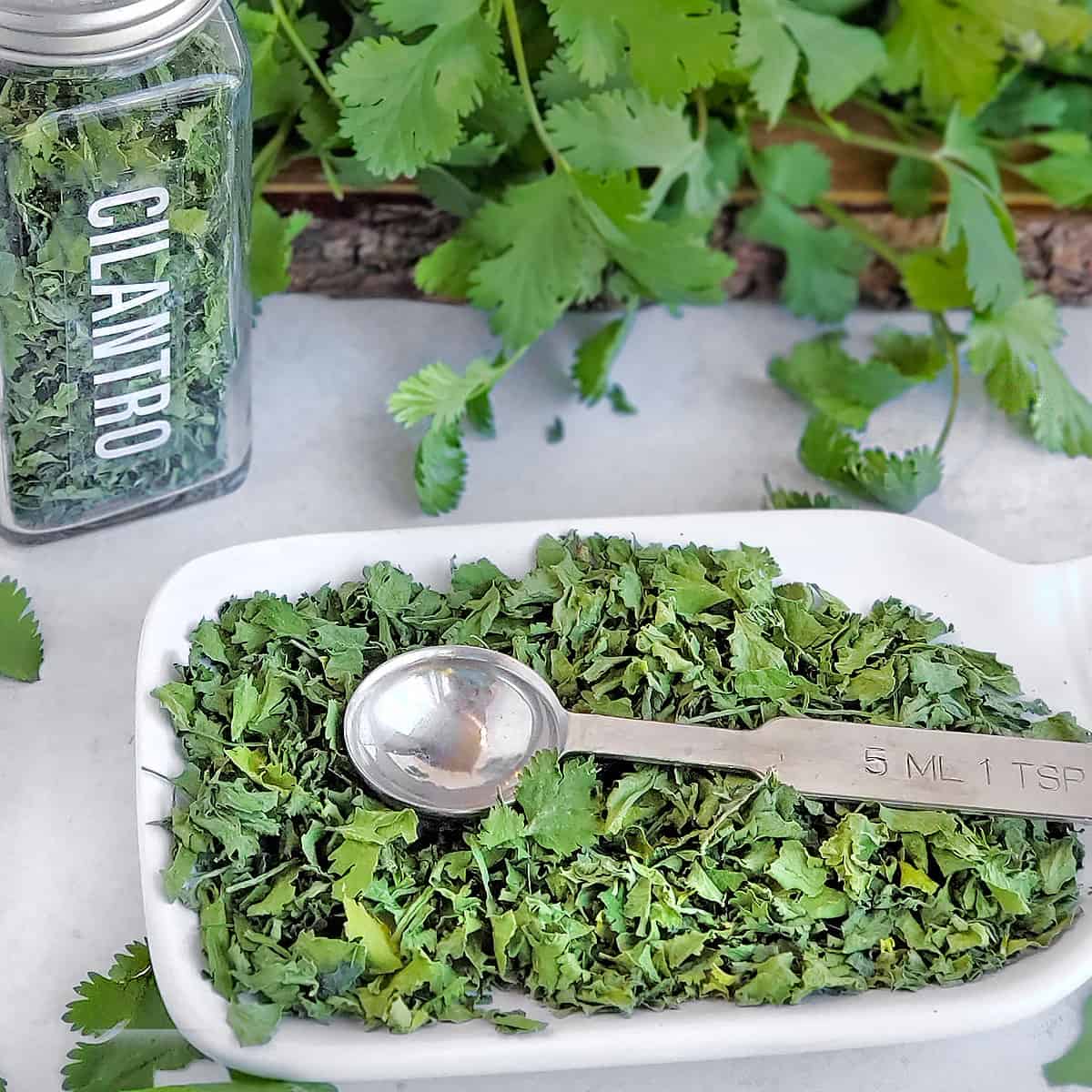
While cilantro and parsley are often mixed up for being the same plant, cilantro and coriander are actually the same!
Around the world, coriander and cilantro are the same – the leaves and stems of the same plant. However, in the US, we call the stems and leaves cilantro, and the spice made from the seeds coriander.
How to Dehydrate Cilantro
Drying herbs is such a great way to preserve them for shelf-stable storage. For cilantro, while it can lose some of it’s flavor in drying, it’s still great for soup, curries, salsas, stews, casseroles, etc. Just use a little more to get the great flavor in your dish!
Step 1
Wash fresh cilantro thoroughly. Be sure to separate the bunches of cilantro before washing.
I love using an OXO Salad spinner to spin the cilantro after washing to remove as much excess water as possible. You can also pat dry with a clean tea towel.
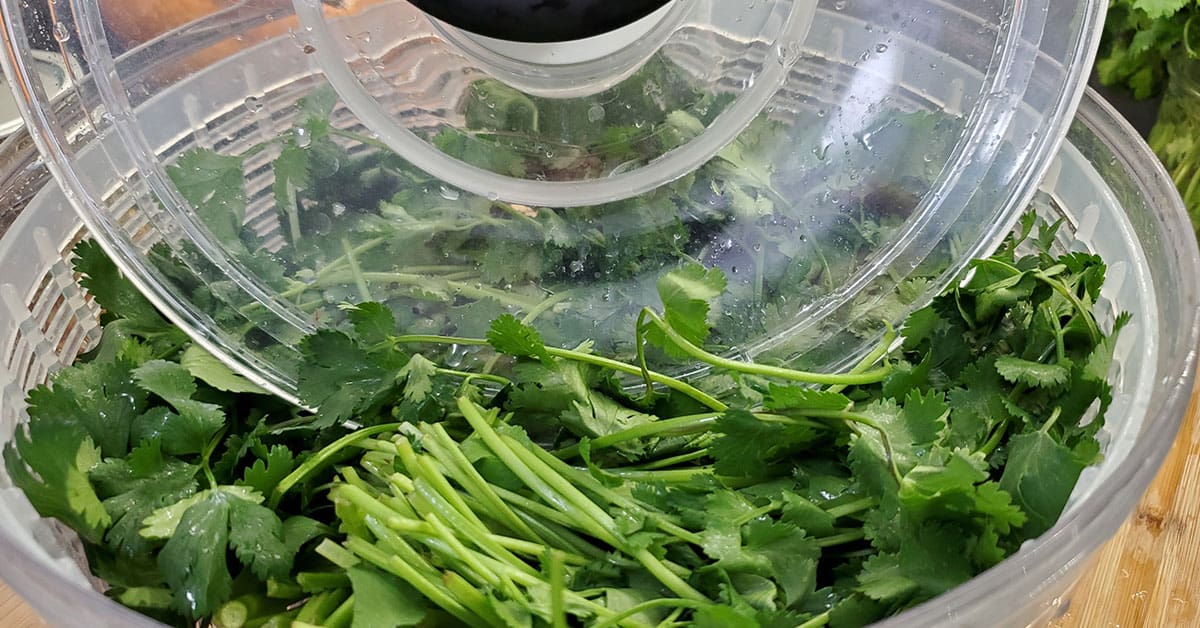
I like to cut the longer legs off the bundles that I cut or purchase from the store. Then separate the leafy ends and place them on trays from the stems and assorted leaves that go on separate trays.
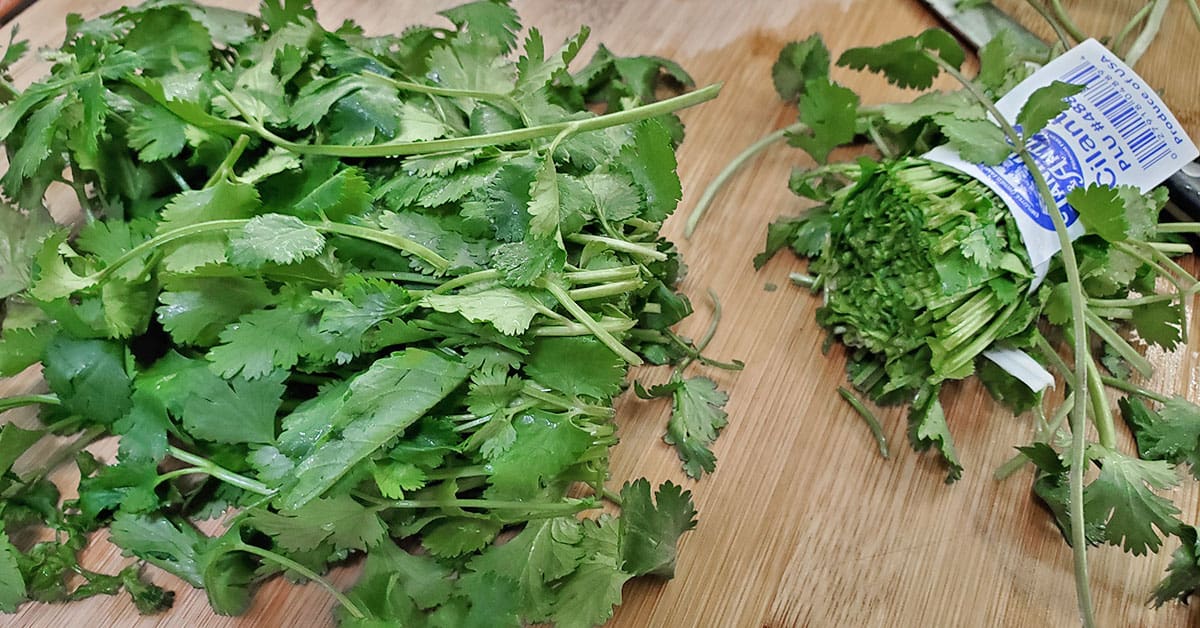
Step 2: Drying
Dry at 95°F / 35°C for 4-12 hours in your food dehydrator.
Times are relative when it comes to dehydrating. It’s based on your machine, the temperature you set, the humidity in your home, and if you are drying only leaves or the leaves and stems.
Expect some of your leaves to turn a little dull, some may be a little yellow or brown. They should crush in your hand easily when completely dry, including stems.
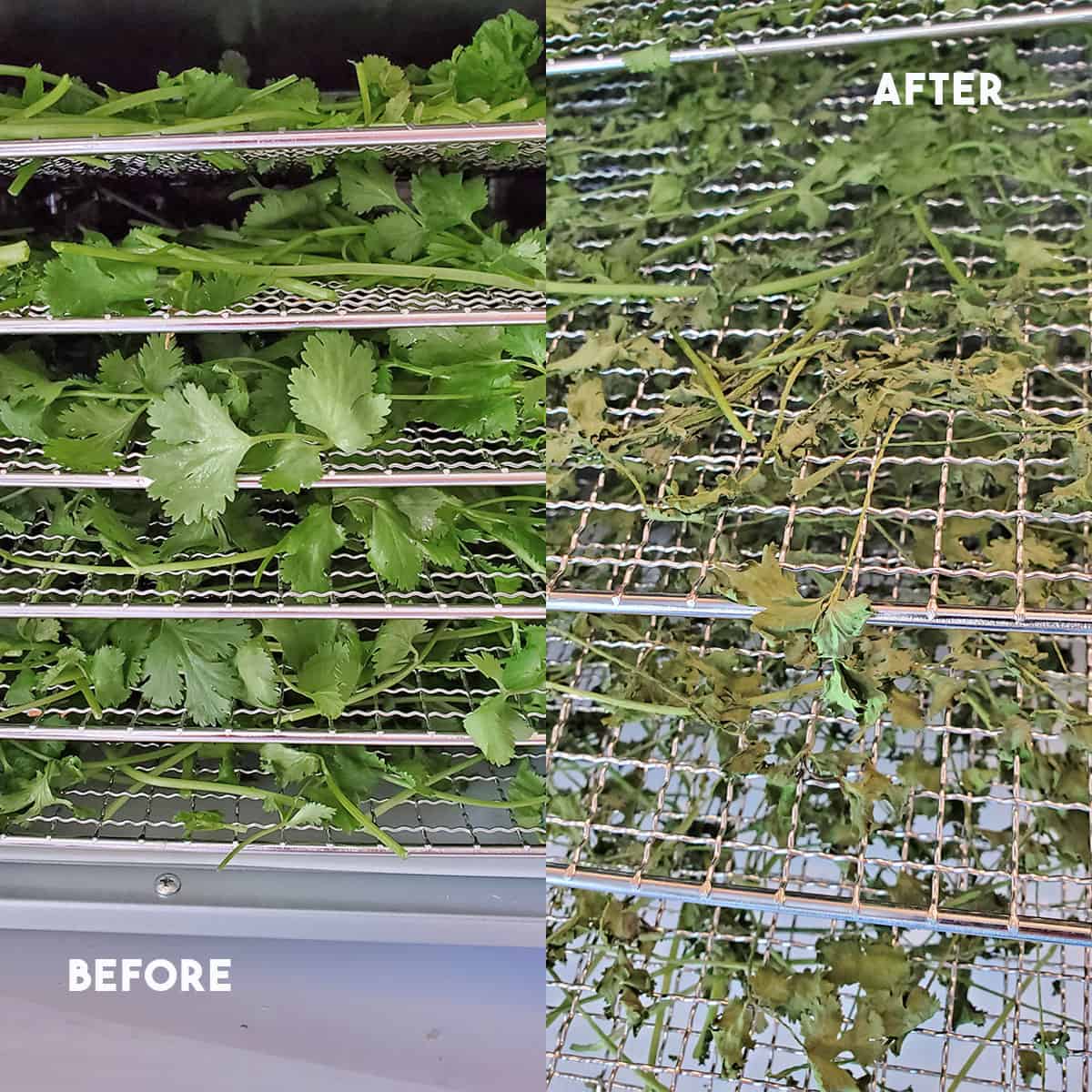
Step 3: Condition
Condition. While conditioning is really necessary for fruits and vegetables, herbs are a little different. When you get to know when leaves are really dry, and feel them as you are stripping them from stems, you’ll know if they need more time.
But until you have the hang of it, conditioning is a necessity.
Step 4: Storage
Store dried coriander leaves in an airtight container, such as a mason jar, for twelve months or so. It is best to store in a cool, dry, dark place for best long-term storage.
How to Condition
Conditioning dehydrated foods is a way to test to be sure the moisture has equalized in your container and that there is no excess moisture.
- Place food into a jar with enough room to move.
- Shake once a day for 5-7 days.
- Look for any signs of moisture buildup: Food sticking to the sides or bottom that won’t easily shake off, clumping, moisture beads on food or jar.
- If you find these issues, place food back into the dehydrator to dry more.
- If you see any mold, toss everything out and sanitize your jar.
Want to learn even more about conditioning? Check out this How to Condition Tutorial.
Oven Directions:
I don’t recommend oven-drying cilantro unless your oven goes below 125°F/52°C. Cilantro loses flavor easily in heat. It would be better to air-dry cilantro than dry it too hot.
- Wash and air dry cilantro.
- Place onto a baking sheet lined with parchment paper for easier removal.
- Dry for 2-3 hours at the lowest temperature setting.
- Crack the oven door with a heat-resistant tool (silicone spatula, wooden spoon, etc.).
- Cool, test, condition, store.
Microwave Directions
- Place a paper towel on a microwave-safe flat dish.
- Place cilantro stems on top of the paper towels in a single layer.
- Cover with another paper towel.
- Microwave for 30-second increments.
- Check between each round to see if the leaves are crunchy and dry all the way through.
- Repeat as necessary.
- Cool, test, condition, store.
Other Ways to Dry Coriander
You can choose several ways to dry cilantro other than with a dehydrator.
- Hanging herbs – this is usually the best means of drying all herbs as it allows all of the natural oils to continue to keep the plant green and as full-flavored as can be. Doing small bunches at a time helps with more efficient drying.
- Hanging in mesh or paper bags/herb drying rack.
- Drying on rack in a car – many folks use the power of the sun in their cars to dry. Just remember, crack those windows to allow heat and moisture to escape, and keep a careful eye out!
But what does it taste like?
Everyone asks. Dried cilantro tastes sort of chewy, and has a dulled flavor of fresh cilantro. The hotter the temperature used, the less like cilantro it tastes. The freshness of the cilantro before drying also plays a part.
Young, fresh, vibrant cilantro works best to retain the most flavor.
If you want a bold cilantro flavor, frozen or freeze-dried cilantro works best.
More on Preserving Herbs
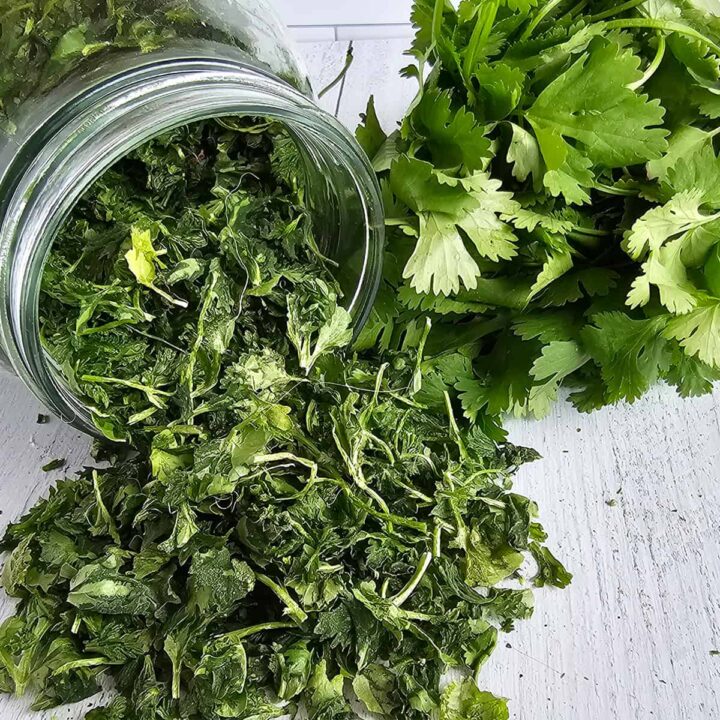
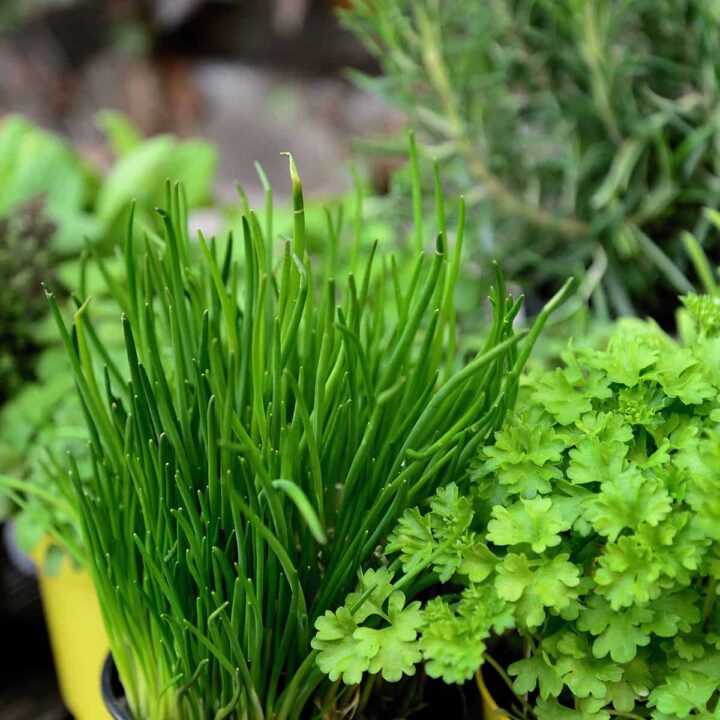
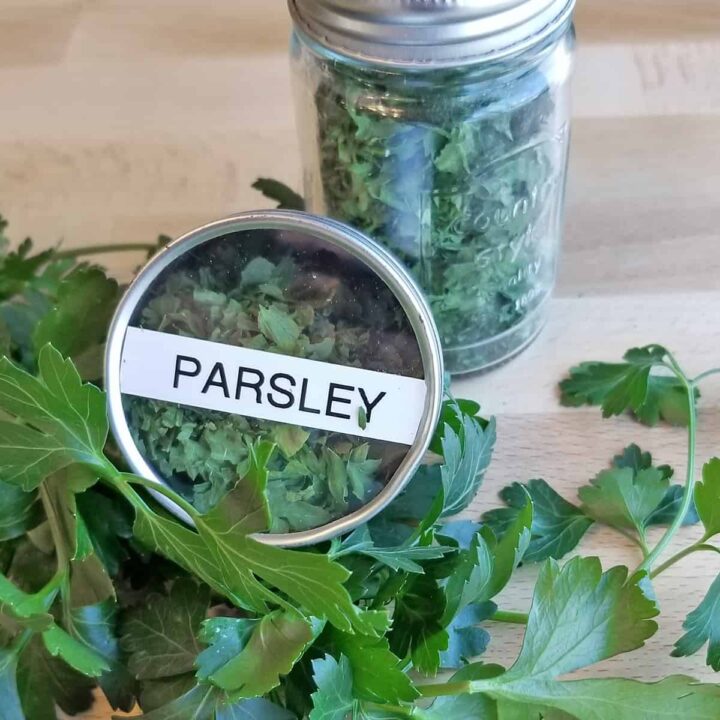
Commonly Asked Questions about Drying Cilantro
Any dehydrator that allows the temperature to go down to 95°F (35°C) is the best for dehydrating or drying herbs. Any hotter, and they begin to lose their flavor and color. I really love using my Cosori dehydrator, but there are a lot of other dehydrators that will work for you, too.
Dried herbs tend to last about nine to twelve months. You’ll notice they begin to lose flavor after a while. The best test is to open your jar, and crumble some in your hand. If you can’t readily identify the herb, it may be time to compost it.
However, if the smell is lighter than you expected, you can use more to bring that same flavor to your dish.
For some folks, cilantro tastes like a bright, fresh herb, perfect for Latin and Indian dishes. For others, it can come off as tasting a lot like soap!
Genetics plays into the way your tongue translates the taste of cilantro!
While dehydrating is an easy way to preserve cilantro, and air drying is the perfect way to dry it, freezing cilantro is the best way to preserve cilantro to keep all of its natural flavor intact, and freeze-drying cilantro keeps most of the flavor for a shelf-stable option.
Around the world, coriander and cilantro are the same – the leaves and stems of the same plant. However, in the US, we call the stems and leaves cilantro, and the spice made from the seeds coriander.
While the two herbs look so much a like, and are often mistaken for each other at the store, there is a difference.
Cilantro has a spicier, peppery, brighter flavor to the milder parsley. However, if you are out of cilantro in a dish, you can substitute it for parsley in most recipes.
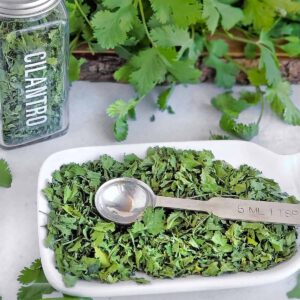
How to Dry Cilantro
Equipment
Ingredients
- Cilantro leaves and stems Coriander (internationally)
Instructions
- Wash cilantro thoroughly
- Place stems on dehydrator trays
- Dry at 95°F / 35°C for 4-12+ hours until crisp
- Condition and store in airtight container
Video
Darcy’s Tips
Oven Directions:
I don’t recommend oven-drying cilantro unless your oven goes below 125°F/52°C. Cilantro loses flavor easily in heat. It would be better to air-dry cilantro than dry it too hot.-
- Wash and air dry cilantro.
- Place onto a baking sheet lined with parchment paper for easier removal.
- Dry for 2-3 hours at the lowest temperature setting.
- Crack the oven door with a heat-resistant tool (silicone spatula, wooden spoon, etc.).
- Cool, test, condition, store.
Microwave Directions
-
- Place a paper towel on a microwave-safe flat dish.
- Place cilantro stems on top of the paper towels in a single layer.
- Cover with another paper towel.
- Microwave for 30-second increments.
- Check between each round to see if the leaves are crunchy and dry all the way through.
- Repeat as necessary.
- Cool, test, condition, store.
Other Ways to Dry Coriander
You can choose several ways to dry cilantro other than with a dehydrator.-
- Hanging herbs – this is usually the best means of drying all herbs as it allows all of the natural oils to continue to keep the plant green and as full-flavored as can be. Doing small bunches at a time helps with more efficient drying.
- Hanging in mesh or paper bags/herb drying rack.
- Drying on rack in a car – many folks use the power of the sun in their cars to dry. Just remember, crack those windows to allow heat and moisture to escape, and keep a careful eye out!
Nutrition
Nutritional information is an estimation only. Nutrient information for dehydrated foods is based on fresh. Use 1/4 of the servicing size for the same nutrient information. Thus 1 Cup of fresh fruit has the same sugars as 1/4 dried.
©ThePurposefulPantry. Photographs and content are copyright protected. Sharing of this recipe’s link is both encouraged and appreciated. Copying and/or pasting full recipes to any social media is strictly prohibited.
This post was originally published May 15, 2021. It has been updated to provide more information for you.

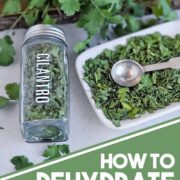
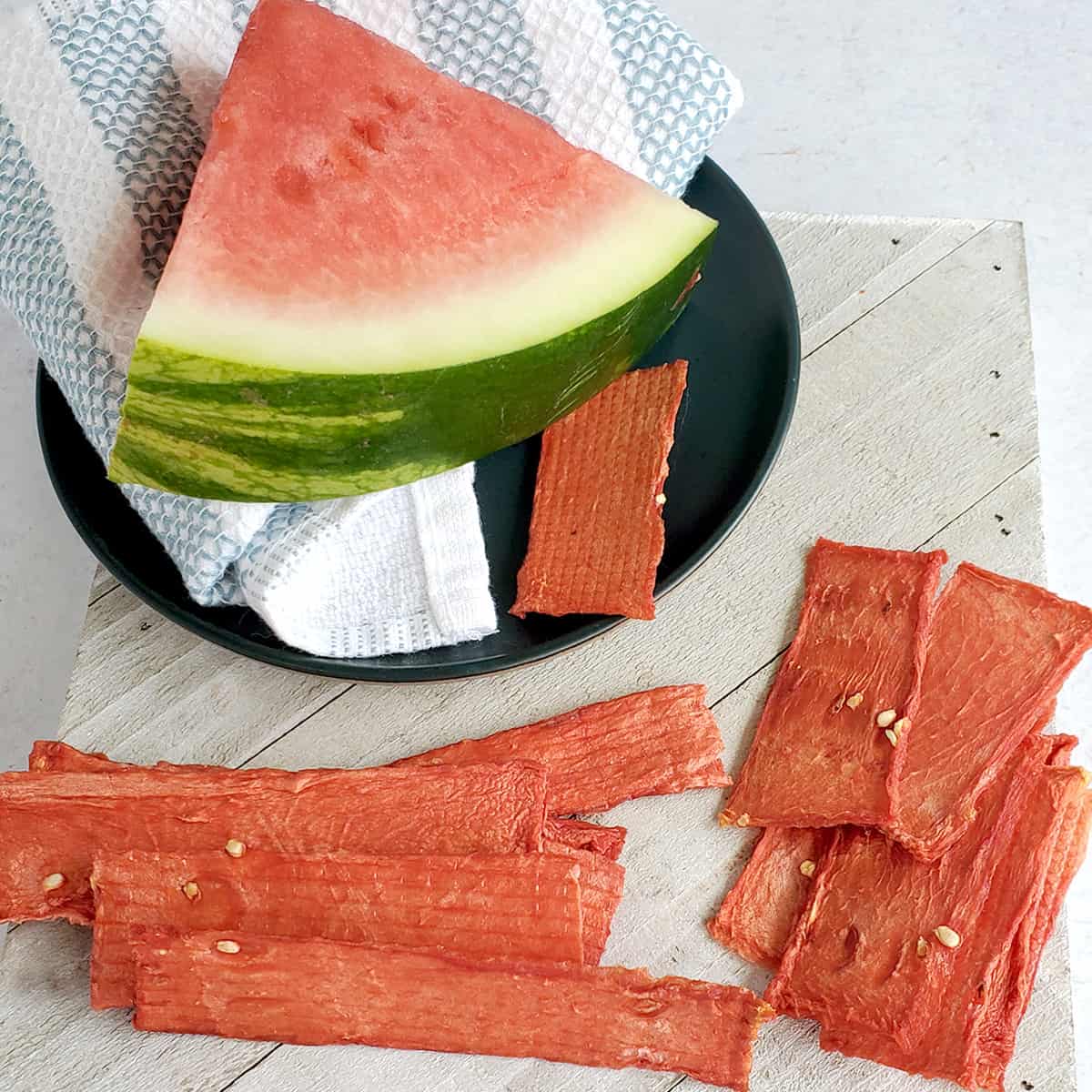
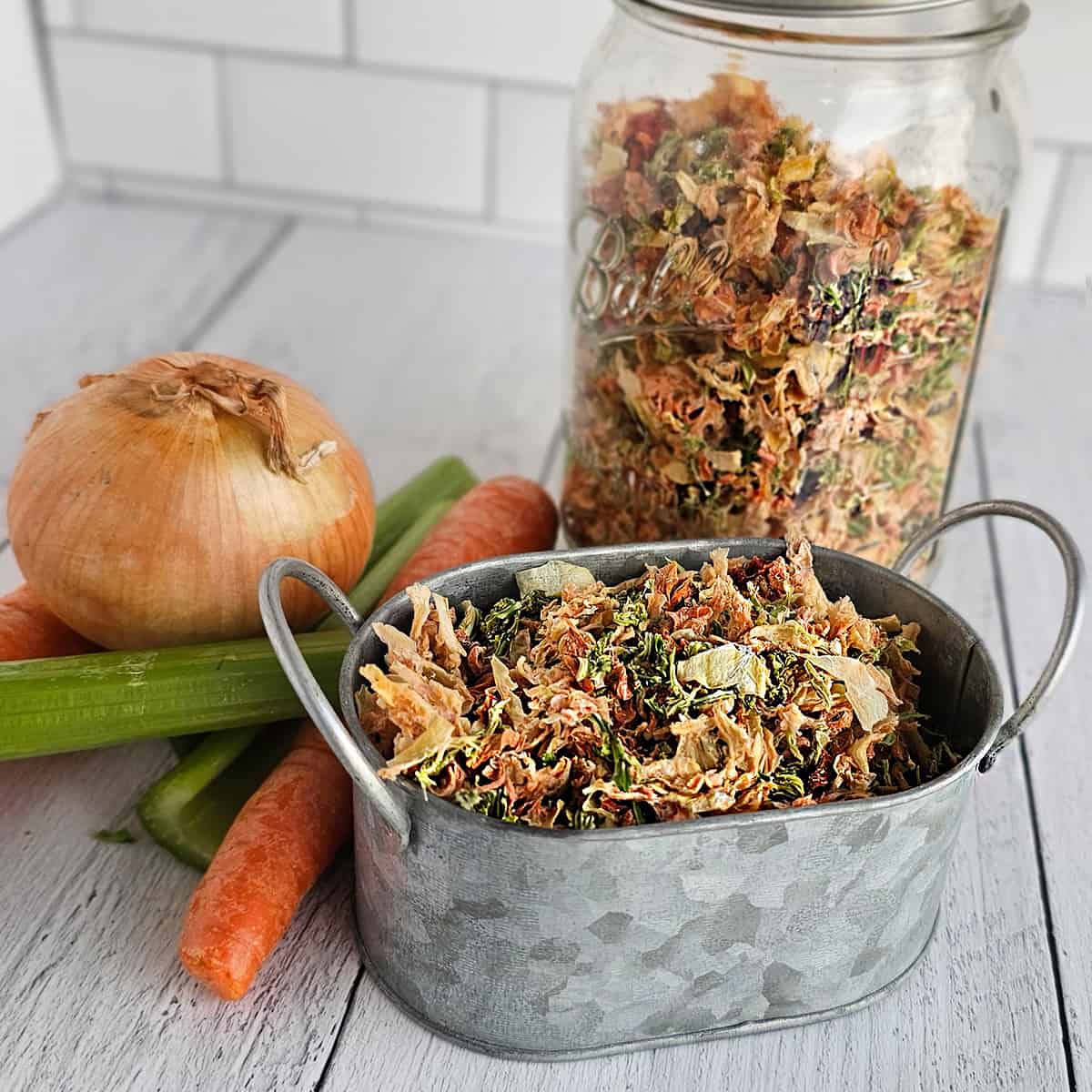


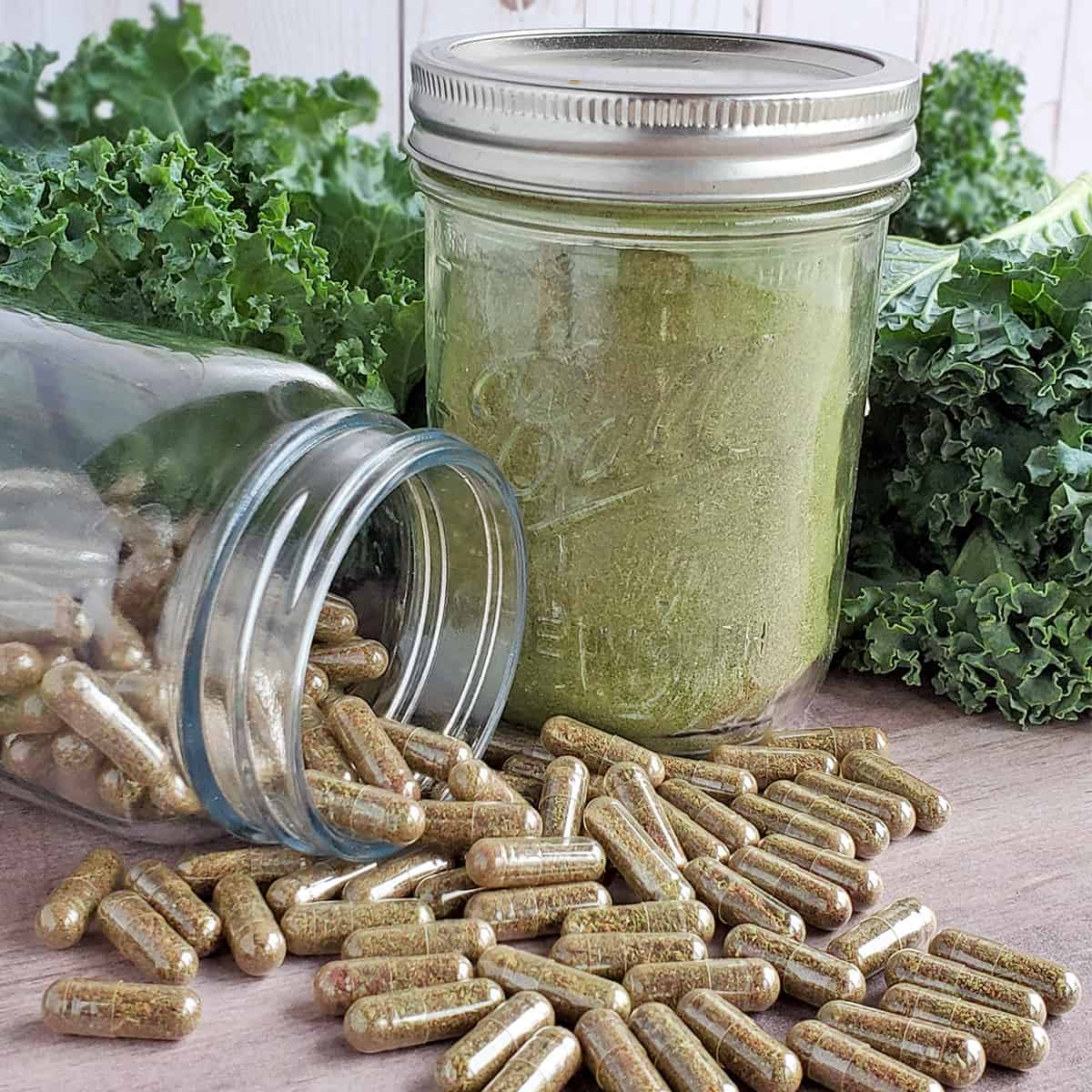
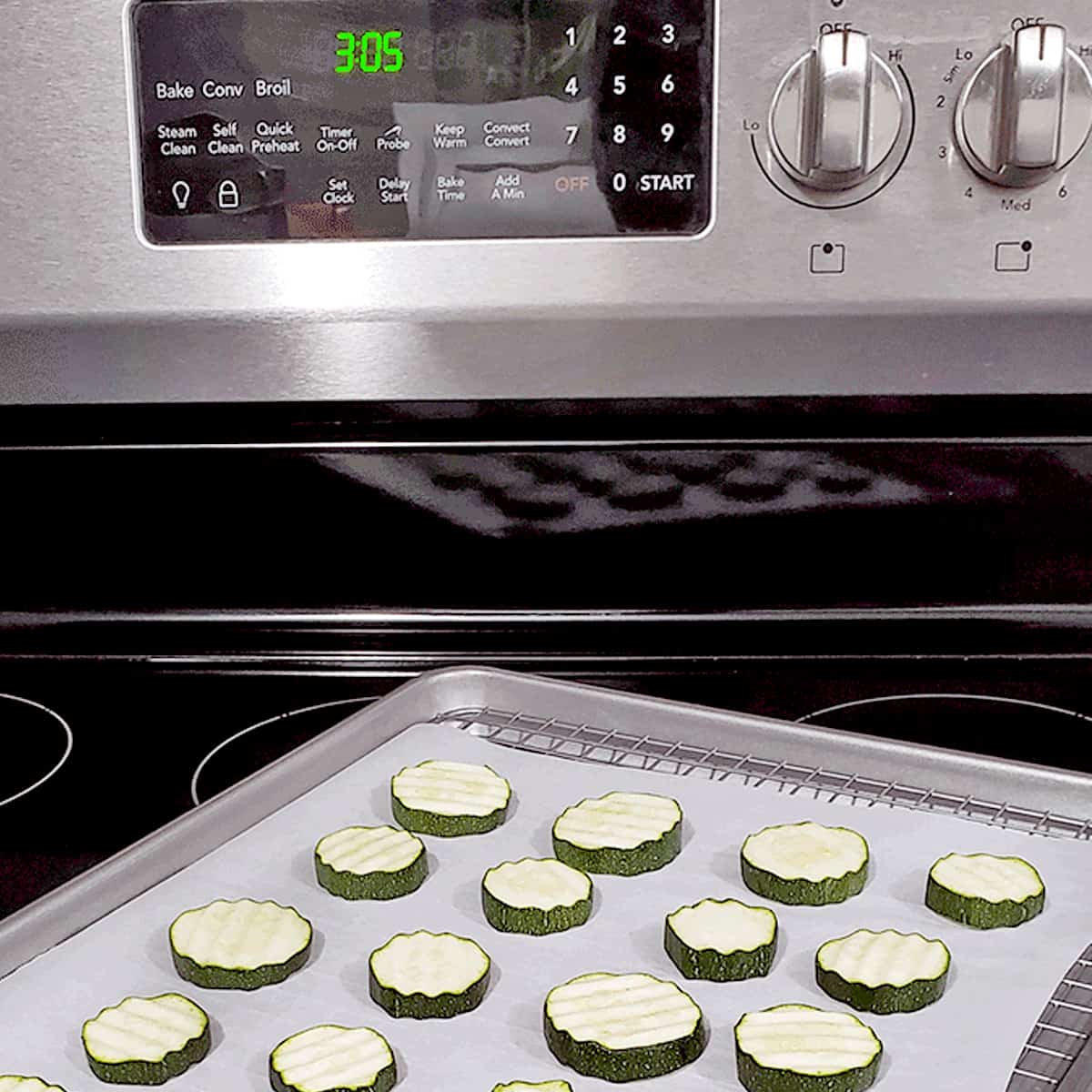
Mine caught on fire when I did it in the microwave. The cilantro started bzzzz-ing like there was metal in the microwave and lit the paper towel on fire FYI